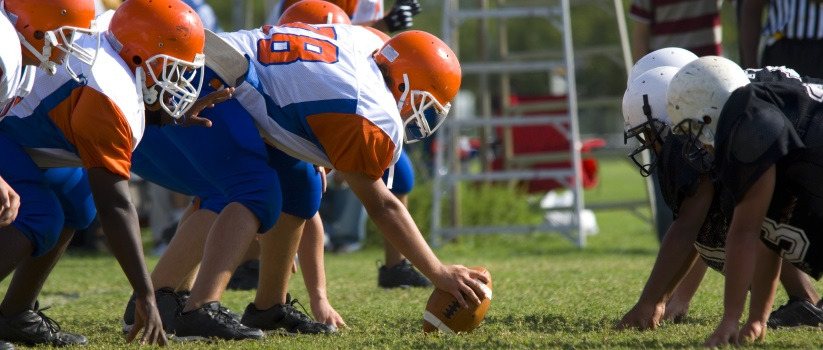November 28, 2016 | Erin Bluvas, bluvase@sc.edu
A team of researchers* led by Assistant Professor of Exercise Science (Athletic Training) Susan Yeargin has found that nearly half (49.8 percent) of youth football events take place in conditions where the heat index is considered to be high risk (greater than 73.5°F) and therefore warrant activity adjustments (e.g., increased rest-to-work ratios). They also found that 20 percent of youth football events took place when the heat index was greater than 85°F, and the events should have been canceled. These thresholds and recommendations are set by the American College of Sports Medicine and the American Academy of Pediatrics.
The study, published in Clinical Pediatrics, examined environmental conditions, particularly heat index, for 2,920 youth football events (e.g., practice, games) across two seasons of 13 youth football leagues located in four regions (e.g., Mid-Atlantic, Northeast, West, Mid-West) of the United States. League participants ranged from 5-14 years of age.
The hottest heat index values took place in July and August, with 24 percent of youth football events occurring during these peak heat index conditions. Only 6.3 percent of the events took place during the cooler 7-10 a.m. time frame. Hotter heat index values were recorded during practices compared to games.
The implications for the study’s findings were clear for the authors: postpone the beginning of the youth football season and, hold events, such as those taking place on the weekends, during the early morning hours.
“Football seasons can easily begin practices in September and still have a full competitive season,” says Yeargin. “Games can also occur on multiple fields at once on the weekends in order to finish in the morning hours. These two simple changes in practices and games can significantly decrease heat exposure of youth and help prevent heat illnesses.”
To facilitate implementation of these evidence-based recommendations, the researchers suggest new policies. “Clinicians should work with administrators and national organizations to develop policies that decrease environmental heat stress of youth football players,” Yeargin says.
According to the authors, future research should include frequent, repeated measurements of the environment. “This helps us gain a better understanding of how environmental conditions change over the course of a practice or game and therefore influence the heat gain of youth athletes,” says Yeargin. “Also, understanding the environmental conditions that other youth sports are experiencing will aid in the development of heat illness prevention policies for multiple youth organizations.”
Youth football participants (ages 7-11) total approximately 1.8 million in the United States. Rates of exertional heat illness (e.g., heatstroke, cramping, heat exhaustion) are highest among this age group compared to other competitive football levels/age groups. Heatstroke is the leading cause of preventable death for the overall youth sports population. Heat index, which factors in temperature and humidity, is a common measure for assessing heat exposure and environmental heat stress among athletes to determine environmental conditions and make suggestions related to exercise modification.
*Co-authors include Susan Yeargin (Exercise Science), Erin Cahoon (Exercise Science), Yuri Hosokawa (University of Connecticut), James Mensch (Exercise Science-Athletic Training), Thomas Dompier (Datalys Center for Sports Injury Research and Prevention), Zachary Kerr (University of North Carolina)
